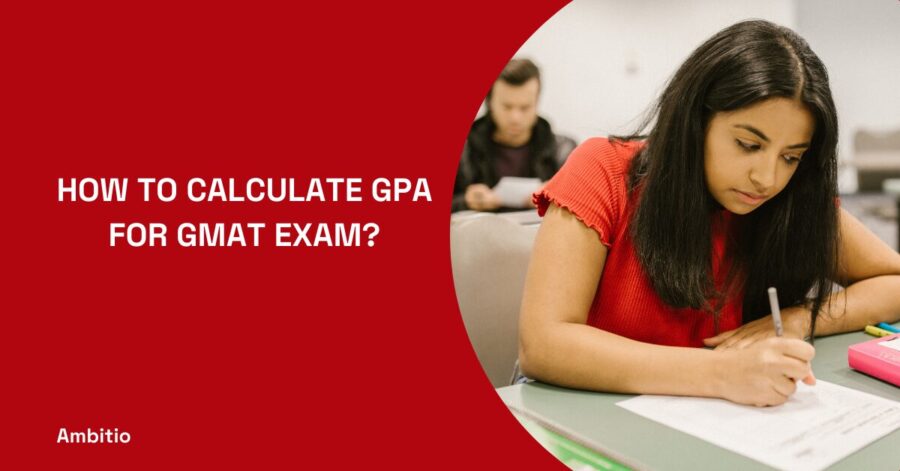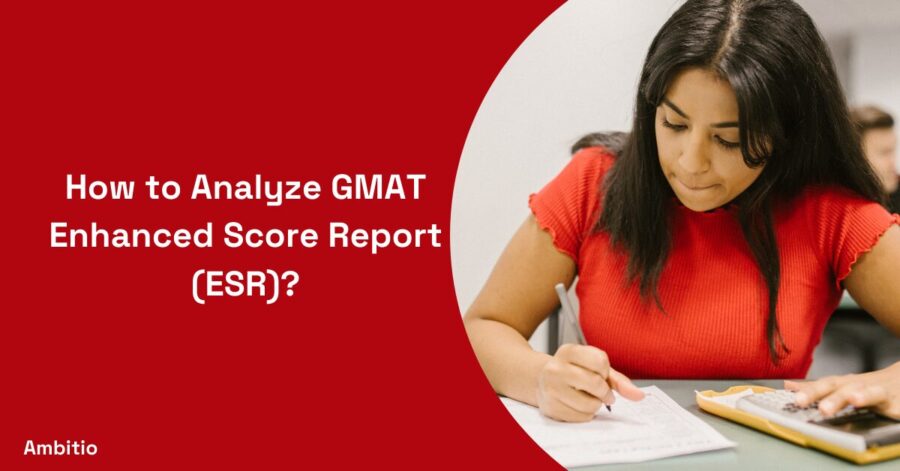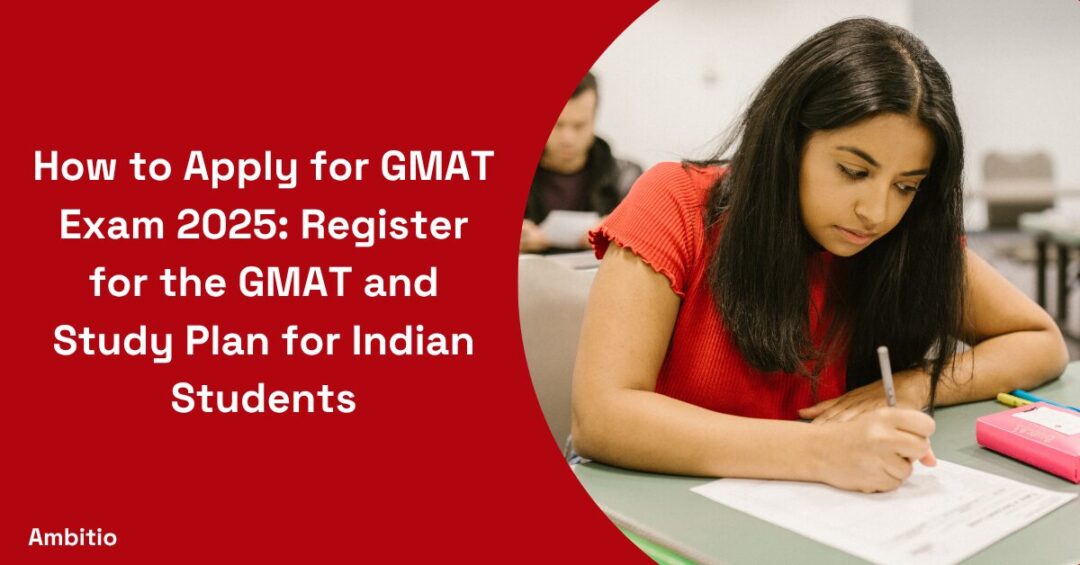3 September 2024
9 minutes read
GMAT Quant Topics and Syllabus: GMAT Quant Section Breakdown

Key Takeaways
- The GMAT Quant section isn’t just about math skills—it’s about applying them strategically to business-oriented problems in a time-pressured environment.
- Success in GMAT Quant requires mastering a range of topics from arithmetic to data analysis, with a focus on both problem-solving and data sufficiency questions.
- Effective preparation involves a balanced approach, including comprehensive content review, regular practice with official materials, and timed full-length tests.
- While Quant is crucial, don’t neglect other GMAT sections—a well-rounded preparation strategy is key to achieving a competitive overall score and impressing business schools.
Are you gearing up for the GMAT but feeling overwhelmed by the Quantitative section? You’re not alone. Many test-takers find themselves puzzled by the array of GMAT quant topics and question types they need to master. The GMAT Quant section can be a formidable challenge, especially if you’ve been out of school for a while or math isn’t your strong suit.
But fear not! Understanding the structure and content of the GMAT Quant section is half the battle. In this blog post, we’ll break down the GMAT Quant syllabus, explore key topics, and provide insights into the GMAT quant questions you’ll encounter. Whether you’re just starting your GMAT journey or looking to fine-tune your preparation strategy, this guide will help you navigate the Quant section with confidence.
GMAT Quant Section Breakdown

Let’s break down the GMAT quant section, a crucial part of the GMAT syllabus. This section tests your math skills and problem-solving abilities, essential for business school success. It consists of 31 questions to be completed in 62 minutes, giving you about 2 minutes to answer each question.
The quant section covers various topics from school math, including arithmetic, algebra, geometry, and more. You’ll encounter two main types of questions: problem-solving questions and data sufficiency. Problem-solving questions are multiple-choice, testing your ability to solve equations and word problems. Data sufficiency questions assess your analytical skills in determining if given information is enough to solve a problem.
To ace this section, focus your GMAT prep on mastering these question types and managing your time effectively. Practice questions from GMAT Club or official GMAT test prep materials can help you get comfortable with the format and improve your quant skills. Remember, a strong quant score can significantly boost your overall GMAT score, which is crucial for top business schools. Make sure to master your GMAT time to gain the real upper-hand in the competition.
While preparing, don’t neglect other GMAT sections like verbal, integrated reasoning, and analytical writing. A well-rounded GMAT preparation strategy includes practicing critical reasoning, GMAT reading comprehension, and timed essay writing. This comprehensive approach will help you perform well across all sections, from the reasoning section to the verbal section.
As you work through practice questions, pay attention to the various answer choices and types of questions you encounter. Whether it’s solving equations, tackling word problems, or analyzing data in the integrated reasoning section, each question type requires a specific approach. With dedicated GMAT preparation and regular practice, you’ll be well-equipped to handle the 31 questions in the quant section and excel in your GMAT test
GMAT Quant Section Syllabus

Let’s break down the GMAT math section syllabus, a crucial part of the GMAT focus syllabus. Understanding this syllabus is key to preparing for the GMAT and achieving a good GMAT score. The quantitative reasoning section tests math concepts you likely learned in high school, but with a business-oriented twist. Having a clear idea of GMAT percentiles helps you in the process.
The quants syllabus covers a range of topics, including arithmetic, algebra, geometry, and data analysis. These GMAT math topics form the foundation of the quantitative problem types you’ll encounter. The syllabus includes multiple-choice questions that test your ability to apply these concepts in various scenarios.
One of the biggest secrets to GMAT success is mastering both quant and verbal sections. While we’re focusing on the quantitative syllabus here, don’t forget about the verbal reasoning section and the integrated reasoning section. A comprehensive GMAT preparation approach covers all sections on the GMAT exam. Even if you are weak in maths, GMAT for non-math background applicants can be cracked with the right strategies.
As you prepare, you’ll notice that questions tested in the GMAT often require more than just solving equations. They challenge your critical thinking and problem-solving skills. This version of the GMAT aims to assess how well you can apply quantitative concepts in business-related contexts.
To excel in GMAT quant, practice is key. Use official GMAT resources and reputable GMAT blogs for study materials. The GMAT topics covered in the quant section are designed to test your ability to think analytically about quantitative problems. Remember, a high score in both quant and verbal can significantly boost your overall GMAT score and reach a score of 750.
Whether you’re just starting to prepare for the GMAT or looking to improve your score, understanding the quantitative syllabus is crucial. It’s not just about recalling high school math; it’s about applying these concepts strategically. With dedicated practice and a solid grasp of the topics asked in the GMAT, including those in the GMAT critical reasoning and integrated reasoning sections, you’ll be well-prepared to take the GMAT and achieve your target score.
GMAT Quant Topic Wise Questions
The GMAT format of quant section covers a range of specific topics, mostly focusing on high school level math. You’ll encounter questions that require knowledge of integer properties and arithmetic, algebra, geometry, and data analysis. It’s important to note that the GMAT isn’t just about solving straightforward math problems; it tests your ability to apply these concepts to business-related scenarios.
To prepare effectively, focus on these key areas:
- Arithmetic: Including fractions, decimals, percentages, and ratios.
- Algebra: Covering equations, inequalities, and functions.
- Geometry: Basic concepts of lines, angles, triangles, and circles.
- Data Analysis: Interpreting graphs, statistics, and probability.
Remember, you have 62 minutes to answer 31 questions in the quant section. Time management is crucial to ensure you don’t run out of time. Practice with full-length practice tests to build your stamina and speed. Understanding the purpose of the GMAT exam is also crucial here.
As you prepare, don’t forget that the GMAT also includes critical reasoning and reading comprehension in the verbal section. A well-rounded approach, covering both quant and verbal topics, is key to achieving a good score on the GMAT, which is scored on a scale of 200-800.
After each practice session, take time to identify and study the correct answers, especially for questions you got wrong. This will help you understand your weak areas and improve your problem-solving strategies. We all know of the importance of the GMAT exam. With dedicated practice on these specific topics, you’ll be well-prepared to tackle the quantitative section of the GMAT.
How Long Is the GMAT Quant Section?
The GMAT quant section is a crucial part of the GMAT maths syllabus and a key section of the GMAT exam. It consists of 31 questions that test-takers must complete in 62 minutes. Master this and you can get the GMAT max score. This time constraint means you have an average of 2 minutes per question, requiring both speed and accuracy. The quant section, along with the verbal, integrated reasoning, and analytical writing sections, contributes significantly to your overall GMAT score. Understanding the time allocation for this section is essential for effective GMAT preparation and time management during the test. Choose the right GMAT books for your prep as well.
The Best Way to Study GMAT Quant
GMAT is an adaptive test. The best way to study for GMAT Quant is to start with a comprehensive review of the core math concepts, then progressively tackle more complex problems.
Begin by assessing your current skill level and identifying weak areas. For example, if GMAT functions is where you fall behind, focus on getting better at that. Create a structured study plan that covers all topics in the GMAT quant syllabus. Practice regularly with official GMAT questions and full-length practice tests to build stamina and familiarity with the exam format.
Focus on understanding the underlying concepts rather than just memorizing formulas. Analyze your mistakes thoroughly and learn from them. Time yourself during practice to improve your pacing. Lastly, don’t neglect other sections of the GMAT while preparing for quant, as a balanced approach is key to achieving a competitive overall score. You can go for a beginner’s GMAT guide to help you with the process as well.
GMAT Quant Problem Solving Questions
To get you ahead in the game of cracking the GMAT, here are a few quant problems you can practice on:
Question 1
A company has a total of 1,200 employees. 60% of the employees are in the sales department, and 40% of the employees are in the marketing department. If 20% of the employees in the sales department are also in the marketing department, what percentage of the employees in the marketing department are also in the sales department?
Explanation
To solve this problem, we need to find the percentage of employees in the marketing department who are also in the sales department.
Given information:
- The company has a total of 1,200 employees.
- 60% of the employees are in the sales department.
- 40% of the employees are in the marketing department.
- 20% of the employees in the sales department are also in the marketing department.
Step 1: Calculate the number of employees in the sales department.
Number of employees in the sales department = 60% of 1,200 = 0.60 × 1,200 = 720 employees
Step 2: Calculate the number of employees in the marketing department.
Number of employees in the marketing department = 40% of 1,200 = 0.40 × 1,200 = 480 employees
Step 3: Calculate the number of employees who are in both the sales and marketing departments.
20% of the employees in the sales department are also in the marketing department.
Number of employees in both departments = 0.20 × 720 = 144 employees
Step 4: Calculate the percentage of employees in the marketing department who are also in the sales department.
Percentage of employees in marketing also in sales = (Number of employees in both departments / Number of employees in marketing) × 100
Percentage of employees in marketing also in sales = (144 / 480) × 100 = 30%
Therefore, 30% of the employees in the marketing department are also in the sales department.
Question 2
A company has a total of 1,000 employees. 60% of the employees are in the sales department, and 30% of the employees are in the marketing department. If 20% of the employees in the sales department are also in the marketing department, what percentage of the employees in the sales department are not in the marketing department?
Explanation
To solve this problem, we need to find the percentage of employees in the sales department who are not in the marketing department.
Given information:
- The company has a total of 1,000 employees.
- 60% of the employees are in the sales department.
- 30% of the employees are in the marketing department.
- 20% of the employees in the sales department are also in the marketing department.
Step 1: Calculate the number of employees in the sales department.
Number of employees in the sales department = 60% of 1,000 = 0.60 × 1,000 = 600 employees
Step 2: Calculate the number of employees in the marketing department.
Number of employees in the marketing department = 30% of 1,000 = 0.30 × 1,000 = 300 employees
Step 3: Calculate the number of employees who are in both the sales and marketing departments.
20% of the employees in the sales department are also in the marketing department.
Number of employees in both departments = 0.20 × 600 = 120 employees
Step 4: Calculate the number of employees in the sales department who are not in the marketing department.
Number of employees in sales but not marketing = Total employees in sales – Employees in both departments
Number of employees in sales but not marketing = 600 – 120 = 480 employees
Step 5: Calculate the percentage of employees in the sales department who are not in the marketing department.
Percentage of employees in sales not in marketing = (Number of employees in sales but not marketing / Total employees in sales) × 100
Percentage of employees in sales not in marketing = (480 / 600) × 100 = 80%
Therefore, 80% of the employees in the sales department are not in the marketing department.
Question 3
A company has a total of 1,000 employees. 60% of the employees are in the sales department, and 30% of the employees are in the marketing department. If 20% of the employees in the sales department are also in the marketing department, and 40% of the employees in the marketing department are also in the sales department, what percentage of the employees are in either the sales or marketing department, but not in both?
Explanation
To solve this problem, we need to find the percentage of employees who are in either the sales or marketing department, but not in both.
Given information:
- The company has a total of 1,000 employees.
- 60% of the employees are in the sales department.
- 30% of the employees are in the marketing department.
- 20% of the employees in the sales department are also in the marketing department.
- 40% of the employees in the marketing department are also in the sales department.
Step 1: Calculate the number of employees in the sales department.
Number of employees in the sales department = 60% of 1,000 = 0.60 × 1,000 = 600 employees
Step 2: Calculate the number of employees in the marketing department.
Number of employees in the marketing department = 30% of 1,000 = 0.30 × 1,000 = 300 employees
Step 3: Calculate the number of employees who are in both the sales and marketing departments.
20% of the employees in the sales department are also in the marketing department.
40% of the employees in the marketing department are also in the sales department.
Let’s assume that x employees are in both departments.
Since 20% of 600 employees in sales are in marketing, and 40% of 300 employees in marketing are in sales, we can write:
0.20 × 600 = 0.40 × 300
120 = 120
Therefore, x = 120 employees
Step 4: Calculate the number of employees who are in either the sales or marketing department, but not in both.
Number of employees in either sales or marketing, but not both = Total employees – Employees in sales – Employees in marketing + Employees in bot
Number of employees in either sales or marketing, but not both = 1,000 – 600 – 300 + 120 = 220 employees
Step 5: Calculate the percentage of employees who are in either the sales or marketing department, but not in both.
Percentage of employees in either sales or marketing, but not both = (Number of employees in either sales or marketing, but not both / Total employees) × 100
Percentage of employees in either sales or marketing, but not both = (220 / 1,000) × 100 = 22%
Therefore, 22% of the employees are in either the sales or marketing department, but not in both. By doing more such questions and honing your skills, you can definitely beat the GMAT.
Conclusion
Mastering GMAT Quant is key to your business school success. GMAT has many benefits, and increasing the scope. We’ve covered the syllabus, question types, and study strategies. Remember, it’s not just about math skills, but applying them strategically under pressure. Balance your prep across all GMAT sections for the best results. With consistent practice and the right approach, you’ll be well-prepared to excel in the Quant section and achieve a good GMAT score. Good luck on your GMAT journey!
Navigate your path to GMAT success with Ambitio’s precision prep for ambitious candidates. Our detailed analytics, personalized feedback, and comprehensive study materials are tailored to help you excel in the quantitative, verbal, and analytical writing sections, setting you up for MBA admission success.
FAQs
How long is the GMAT Quant section?
The GMAT Quant section consists of 31 questions to be completed in 62 minutes.
What types of questions are in the GMAT Quant section?
The Quant section includes problem-solving and data sufficiency questions, both in multiple-choice format.
What math topics does the GMAT Quant section cover?
It covers arithmetic, algebra, geometry, and data analysis, with a focus on applying these concepts to business-related scenarios.
How is the GMAT Quant section scored?
The Quant section contributes to your overall GMAT score, which is on a scale of 200-800.
What’s the best way to prepare for GMAT Quant?
Start with a comprehensive review of core math concepts, practice regularly with official GMAT questions, and take full-length practice tests.
Is GMAT Quant harder than high school math?
While GMAT Quant uses high school-level math concepts, it tests them in more complex, application-based ways that require critical thinking.
Should I focus only on the Quant section when preparing for the GMAT?
No, while Quant is important, a balanced approach covering all GMAT sections is crucial for a competitive overall score.

You can study at top universities worldwide!
Get expert tips and tricks to get into top universities with a free expert session.
Book Your Free 30-Minute Session Now! Book a call now




























